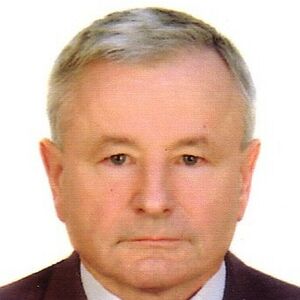ВКР (1229297), страница 9
Текст из файла (страница 9)
if( capture )
{
for(;;)
{
if(!cvGrabFrame( capture )) break;
frame = cvRetrieveFrame( capture );
if( !frame ) break;
if( !frame_copy )
frame_copy = cvCreateImage( cvSize(frame->width, frame->height),IPL_DEPTH_8U, frame->nChannels );
if (!cvVideoWriter)
cvVideoWriter=cvCreateVideoWriter(fname, CV_FOURCC('P','I','M','1'),25, cvSize(frame->width,frame->height),1);
if( frame->origin == IPL_ORIGIN_TL )
cvCopy( frame, frame_copy, 0 );
else
cvFlip( frame, frame_copy, 0 );
cvWriteFrame(cvVideoWriter,frame_copy);
cvShowImage( "VideoOut", frame_copy);
if( cvWaitKey( 25 ) >= 0 ) goto _cleanup_;
}
cvWaitKey(0);
_cleanup_:
cvReleaseVideoWriter(&cvVideoWriter);
cvReleaseImage( &frame_copy );
cvReleaseCapture( &capture );
cvDestroyWindow("VideoOut");
}
return 0;
}
Приложение В
(обязательное)
Перевод первой главы
1 REVIEW OF THE SUBJECT AND TECHNOLOGIES FOR THE SOLUTION OF THE PROBLEM
1.1 Application of information technology in geomarketing problems
At present, the sales market specialists and leasing of real estate for commercial purposes often estimate the value of an object, given the capacity of streets, the population density of the area, etc. On the basis of data on the number of people passing per unit time by the object being analyzed, it is possible to estimate the losses or income from investments of resources of time, capital and labor. In order to collect statistical data for further research the benefits of location of advertising objects or organization in a given area of the city is necessary to use both internal and external resources of the company. Obviously, the organization and carrying out qualitative analysis is an expensive process. It should be noted that the data on which the study is conducted geomarketing, quickly becomes obsolete and contain random distortions.
This work is dedicated to the development and implementation of hardware and software in the field of pattern recognition geomarkenting. The hardware module comprises a video camera provides video fixation, which is then processed in real time in order to separate objects (pedestrian), the counting of the number and direction of movement. On the basis of the data obtained can be carried out geomarketing analyzes the attractiveness of a location.
Geomarkenting is the direction of marketing research, which uses as the basis of the data of geographic information systems (GIS). The main issues under consideration include research on the choice of location of new points of sales and marketing optimization in a network of retail outlets.
To address the objectives necessary to analyze the buying capacity and density of population, transportation accessibility, etc. It is also necessary to take into account geographical factors such as:
– heterogeneity of the demand;
– heterogeneity proposals in the area;
– inconsistency of supply and demand;
– the cost of space, that economy uses [1].
Geomarketing is a big interest for the owners and tenants of retail outlets, of which the profits depends on the location. Such objects are considered most often as grocery stores, pharmacies, newsstands, and so on. n. Static data about attendance of individual objects can be used to analyze the capacity of the streets and carriageways of trails that will help better organize the movement of vehicles and pedestrians on the roads of the city.
Currently, this line is used in various fields:
– risk analysis;
– location of the customer;
– analysis of the location and planning;
– marketing;
– advertising and media planning;
– spatial planning;
– real estate expertise;
– the organization of the branch network;
– socio-demographic analysis;
– management;
– direct marketing;
– market analysis.
The main objects of geomarkenting analysis is on the picture 1.1.
 Figure 1.1 – Objects of the geomarkentingovy analysis
Figure 1.1 – Objects of the geomarkentingovy analysis
Geomarkenting analysis is currently performed using geographic information systems in offline mode, without the use of operational information received and processed in real time. However, modern GIS have the opportunity to display statistical data received from remote devices. It is an object of development of software and hardware systems in the art, it is also a processing collected information so that it can be visualized in such systems. Currently, the GIS can not be a solution for geomarketing tasks in full (picture 2).
 Figure 1.2 – Tasks of geomarketing
Figure 1.2 – Tasks of geomarketing
To solve the problem geomarkenting research requires a large number of different types of data that must be analyzed by data mining [2].
During the preliminary study of the project complete analogues of the proposed hardware and software found. Indirect analogues server side can be regarded as geographic information systems (GIS) Map Info Professional and Arc GIS Spatial Analyst. Map Info Professional – Geographic Information System (GIS) for collecting, storing, displaying, editing, and analysis of spatial data. Localized version, produced in Russia. Main features: support of common data formats, including Office formats, formats, relational and spatial databases, graphical data formats; use images of virtually any format; access to hybrid cards and photographs Microsoft Bing; tools for creating and editing graphics and tabular data; Wizard card; Data publishing wizard with the possibility of sharing settings. Arc GIS Spatial Analyst provides a broad range of spatial modeling and analysis functions, and allows you to perform a joint analysis of vector and raster data. By using Arc GIS Spatial Analyst, you can obtain information about the data, identify spatial relationships, find suitable locations, calculate the cost of moving from one point to another location. The main drawback is the lack presented unique device automatically collect and process the data interacting with the software package. Also disadvantage of these products is their high cost, due to the high flexibility and hence the large number of modules. The use of a highly specialized system will significantly reduce the cost of the services offered.
With the development of market relations in Russia is growing competition, which leads to the fact that for the preservation and development of business executives need to make the best decisions in the short term, while minimizing the costs of the search for these solutions. One of the tools of such research is marketing research. Geomarketing – a new trend of marketing research, which arose due to the wide dissemination of geographic information systems (GIS) and spatial data used for marketing analysis areas. In Russia, this trend is not very popular, but it is already beginning to develop [8]. The main problem arising during geomarketing studies to date is the difficulty of obtaining statistical data in determining the density of pedestrian and automobile flow in certain areas of cities. Fix this problem will help the introduction of intelligent video surveillance system enables the automatic predeployment training and the transfer of data to a GIS server. To develop such a system at present, there are all the necessary technology – compact low-power digital cameras, powerful single-board computers allow to process video images «on the fly», high-performance image recognition algorithms, technology, high-speed wireless data transfer etc. The author conducted a preliminary study of the proposed project, the basic techniques that will be used for its implementation, and further work is scheduled plan. Such a system the data processing unit shown on the picture.

Figure 1.3 – The Diagram of pattern recognition system
The module may include methods of intellectual analysis of information that are listed in the following section.
1.2 Methods of Data Mining
A / B-testing. The technique, the control sample is compared alternately with the other, the result is an optimal combination of indices.
Association rule learning. The list of methods for the identification of the relationships in the data arrays between changes.
Classification. The list of methods for the prediction of consumer behavior in certain conditions.
Cluster analysis. One method of classification by identifying common signs of unidentified groups.
Crowdsourcing. The technique is based on the collection of data from different sources.
Genetic algorithms. The method, which is a "chromosome", which can mutate and combined.
Machine learning. Methods aimed at creating a self-analysis algorithms based on empirical data.
Network analysis. The list of methods of analysis links between the nodes of one network.
Optimization. The list of numerical methods for improving one or more parameters in complex systems and processes.
Pattern recognition. The list of techniques with elements of self-study to predict the behavior of the object.
Predictive modeling. The list of techniques that allow you to to create a mathematical model as opposed to the original script.
Regression. The list of statistical techniques to identify patterns between changes in the dependent variable from the independent.
Signal processing. The list of techniques for signal detection in noise and its further analysis.
Spatial analysis. Techniques for analysis of spatial data, such as the topology of the terrain, geographical coordinates, the geometry of objects.
Statistics. The science of collecting, interpreting, organizing data, including experiments.
Supervised learning. The techniques based on machine learning technologies, allowing to reveal the relationship of the analyzed data.
Simulation. The main of this technique is the simulation of various scenarios conduct research object.
Time series analysis. The analysis method for repeating a data processing time.
Visualization. Methods of presenting data in graphical form: tables, graphs, diagrams, animations, for an understanding of the data.
These techniques are complementary and provide a comprehensive analysis for pattern recognition.
1.3 Machine Learning Methods
Machine learning – the process by which the machine (computer) is capable of showing a behavior that it was not explicitly laid down (programmed). [34] The following are methods that are used to teach pedestrian detection systems.
Support Vector Machines (Support Vector Machines, SVM), this method solves the problem of classification and regression by constructing a non-linear plane, separating the solution.
SVM has a high degree of flexibility in solving problems of regression and classification of different levels of complexity.
Various types SVM models:
– linear;
– polynomial;
– RBF (radial basis function);
– sigmoid.
To construct the optimal hyperplane, the SVM resorting to iterative learning algorithm, is used to minimize the error function.
Depending on the type of the error function, SVM model can be divided into four groups:
– classification SVM Type 1 (also known as C-SVM classification);
– SVM classification Type 2 (also known as Nu-SVM classification);
– regression SVM Type 1 (also known as epsilon-SVM regression);
– SVM regression type 2 (also known as Nu-SVM regression);
Bayesian method formulated primarily to solve classification problems.
In making stricter assumptions (the method is based on the assumption that the independent variables are statistically independent), the model of Bayesian procedures – effective classification tools, easy to use and easy to interpret.
Bayesian method is particularly relevant for the problems of high dimensionality of the input space, it means in case of problems with a large number of input variables. A closely related problem of «curse» dimension.
Bayesian method is often superior to other more sophisticated classification methods.
There are various methods for modeling the conditional distributions of input values: normal, lognormal, gamma distribution and the Poisson distribution.
K-nearest neighbor method – a method based on the use of memory, and unlike other statistical methods, requires no prior training (do not customize the models).
The work method is based on the intuitive assumption that the closely spaced objects are likely to belong to the same category.
Thus, the forecasts are based on a set of prototype models that predict new (not observed yet) values, using the principle of "win the majority of votes" for the classification and averaging principle for regression tasks of the nearest samples (hence the name of the method).
1.3.1 Methods of pattern recognition
















